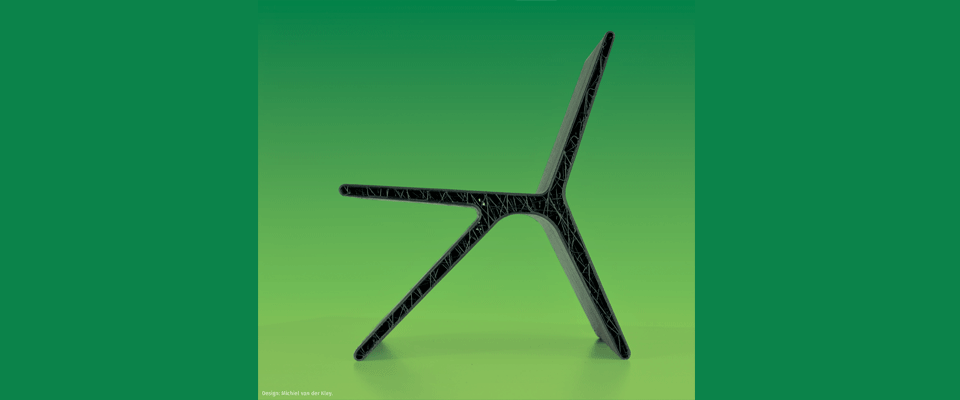Materials manufacturer Covestro introduces its first material developed by the additive manufacturing business recently acquired from DSM: a glass-fiber filled recycled polyethylene terephthalate (rPET) for 3D pellet printing. Made from post-consumer PET waste, Arnite® AM2001 GF (G) rPET perfectly fits Covestro’s vision for a Circular Economy and illustrates how complementary the two organizations are in their approach to adding more value to additive manufacturing and industrial production overall.
The glass-fiber filled pellet material brings structural performance to a part at a substantially lower carbon footprint than virgin material. Manufacturers can now make their supply chain more circular without the need to compromise on performance.
Increasing sustainability, reducing cost
The recycled PET has been optimized for 3D pellet printing. This technology, also known as fused granulate fabrication (FGF), allows for fast and economically viable additive manufacturing of large-size parts. Direct printing of applications lowers cost by reducing product development time. Plus 3D printing allows design flexibility, which can help reduce material cost. 3D printing is an intrinsically more sustainable production method as it only uses the material that is needed. By also making the material more sustainable, Covestro helps manufacturers shift toward a Circular Economy.
Arnite® AM2001 (G) rPET‘s mechanical properties and broad processing window makes it ideally suited for structural applications across a variety of industries, including pedestrian bridges, tiles for cyclist or pedestrian tunnels, architectural applications like cladding or partition walls, in- and outdoor furniture, small boats, packaging crates or tooling.
Hugo Da Silva, Head of Additive Manufacturing (former-DSM) commented: “The introduction of this high-performing material for 3D pellet printing is an important step in creating circular supply chains. With PET packaging accounting for more than 50 percent of total plastic waste, extending its lifetime by re-using it as feedstock offers a broadly available alternative to virgin raw materials – without the need to compromise on performance or total cost of ownership.”
Patrick Rosso, Head of Additive Manufacturing (Covestro) added: “We’re excited about the introduction of this circular material designed by our new colleagues. It perfectly fits the Covestro vision of a Circular Economy. This material is the best proof point we could want to underpin the two teams’ joint ambition to bring the market a stronger materials partner that can help accelerate industrial additive manufacturing.”




